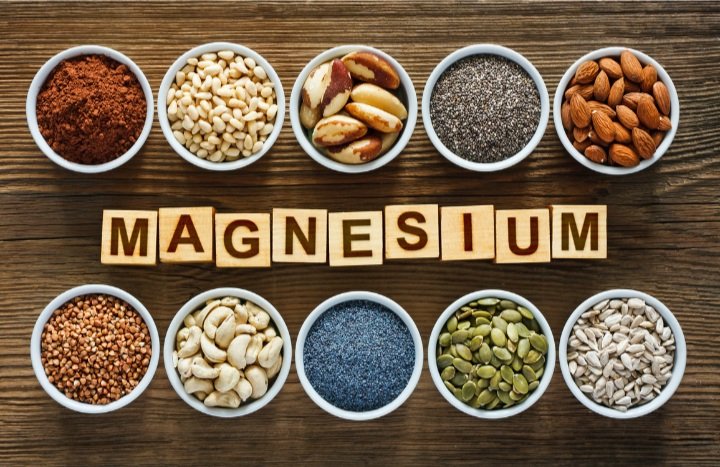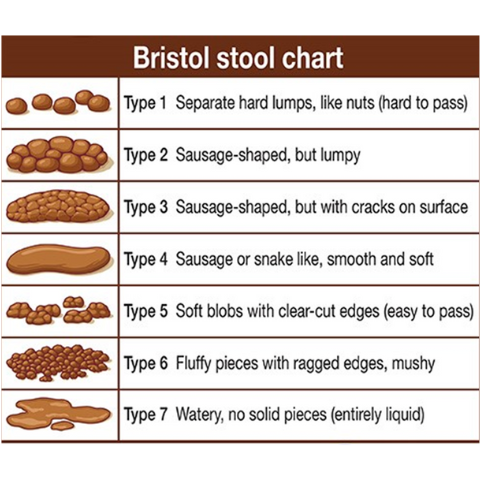How to Use Magnesium to Help Soothe Constipation in Children
If you've been searching with Dr. Google for ways to help your child with constipation, you’ve got company. You've probably found people recommending magnesium for constipation. Or, maybe your child has been on Miralax for a while and you're looking for an alternative.
In this article, we're diving into all things magnesium including when and how to use it to help treat constipation.
What Is Magnesium?
Magnesium is an essential mineral that the body needs to be healthy. In the body, magnesium helps with:
● Chemical reactions
● Regulating blood sugar
● Controlling blood pressure
● Helping muscles and nerves work properly
● Constipation
Why Use Magnesium to Help With Constipation?
If your child has been dealing with constipation for a while, you've probably already tried Miralax and thought that it was the only answer. This is what most pediatricians recommend for constipated kiddos, but there are other options. Magnesium being one of them.
Magnesium has a long history of use for constipation in Eastern medicine.1 Recent research has shown that magnesium can help with constipation in children.
Magnesium supplements are also inexpensive, safe, and easy to get your kiddo to take.
Magnesium or Miralax?
Many doctors or pharmacists recommend Miralax when working with children with constipation. However, our clients have experienced two main issues with it.
First, most doctors recommend an amount of miralax that makes the stool liquid which can cause accidents. This becomes a frustrating, messy situation for you and your child. This usually leads to a decision to stop using it, causing more constipation and backups for your child. Second, there isn't enough follow-up care to see if it is working or not and when to stop using it.
Miralax isn't meant to be used as a solution for chronic, long-term constipation.
Miralax contains polyethylene glycol which acts to draw water into the stool. Taken in the right dose, magnesium does the same action but in a more natural way. We prefer it over Miralax because it's a natural option to soothe constipation and it seems to be easier to adjust the amount needed to provide the proper stool consistency. This gives us time to work on the root causes of constipation.
If you’ve been dealing with a constipated child for any amount of time, you’ve likely given Miralax to your child. Because it’s what most pediatrician recommend, it’s the osmotic laxative most of the kids we treat in the clinic are on when we first start working together. It can have a place in your child’s constipation treatment, but we want to you know that Magnesium can provide the same desired outcomes without the potential for accidents or other unwanted side effects.
If you want to try magnesium, you're probably wondering what type you should use. Let’s dive into your options.
What Type of Magnesium Should You Use?
If you’ve looked at magnesium supplements, you know there are a lot of different forms and are probably confused about which one to try. There are actually 9 forms of magnesium all with different health benefits ranging from relaxation, helping with muscle pain, depression and cardiovascular health. While these benefits may be helpful, it’s important to focus on the forms of magnesium that help the most with constipation – magnesium citrate and magnesium oxide.
First, we'll get into a little science about the two molecules.
Magnesium Citrate
Magnesium citrate is a magnesium molecule that is bound with a citric acid molecule. Both of these are readily found in nature. Citric acid is the acid found in citrus fruits. (Don’t worry, we'll cover food sources of magnesium below.)
Magnesium Oxide
Magnesium oxide is magnesium and oxygen molecules bonded together. And as you know, oxygen is found all around us.
How Do Magnesium Citrate and Magnesium Oxide Work for Constipation?
Both forms of magnesium are types of osmotic laxatives. Magnesium draws water into the intestines. The water then mixes with the dry stool. This makes the stool easier and less painful to pass. When the stool swells, the muscles in the intestine push it along so it can be removed from the body.
Have you ever had one of those sponges that compress and swell when you soak it in water? The stool that contains magnesium acts like that sponge soaking up water and swelling inside the intestines. (Don’t worry, it can’t swell too much.) And, the stool swelling with water is good. It makes the stool softer and easier to pass.
When the intestines feel the stool swell, they want to move that stool out of the body. So, the muscles in the intestines start moving the stool along to get it out.
When the stool is easier to pass, it doesn't hurt. This is the first "win" when working with a child dealing with constipation. This way they aren't afraid that their bowel movements are going to hurt. And they're more likely to poop and be open to working on other things that make pooping easier.
Is Magnesium Different for Kids Than Adults?
The basic ingredient – magnesium citrate or magnesium oxide – are the same for kids and adults. Some supplements include calcium which we don't recommend for children. When looking at magnesium supplements, read the label carefully to see if your child has sensitivities to added flavors and colorings.
Is Magnesium Safe? Are There Any Side Effects?
Magnesium is safe in the recommended dosage to treat constipation. You should be okay using magnesium as long as your child is otherwise healthy. Make sure your child is drinking fluids throughout the day when they are on magnesium. Hydration is important. More water in the body helps the magnesium work. As with many other vitamins and minerals, the body will use the amount of magnesium it needs, and what it doesn’t need, will be flushed out through the bowels, kidneys or sweat.
We recommend starting with the recommended dosing on the package and letting the poop be your guide. The goal is for the poop to be the consistency of play dough. If it is softer or looser than that, give a little less. It the poop is still too hard, give a little more. Continue adjusting the dose until you get that play dough consistency.
On the Bristol Stool Chart below, you want a consistency of 4, 5 or 6.
It may feel scary, we know. As long as your child is otherwise healthy, magnesium should be safe. As always, it’s important to talk with your child’s pediatrician to ensure that magnesium is safe for your child.
Food Sources of Magnesium
Here are some ways to get magnesium through foods. Increasing the amount of magnesium your child eats may help with their constipation. Because magnesium comes in many different forms, the foods high in magnesium many not contain magnesium citrate. For this reason, your child will likely still need to add a supplement to get the power of magnesium citrate, but adding in food sources can help.
● Avocado
● Black beans
● Brazil nuts
● Halibut
● Nuts (such as almonds, cashews, chestnuts, hazelnuts, and walnuts)
● Peanuts and peanut butter
● Pumpkin seeds
● Soybeans
● Spinach
● Tofu
If your child likes to take baths, adding Epsom salt to their bath can help because magnesium is easily absorbed through the skin. Just make sure to rinse your child off with fresh water after to remove any salt from his or her skin.
Magnesium Supplements We Recommend
With the plethora of magnesium supplements on the market, here are the ones that we recommend most often to our clients.
Natural Calm Unflavored or Raspberry Lemon : We recommend this product for cleanouts and in lower doses for daily maintenance. This is a powder so you can mix it into water or flavored drinks. We hear OJ and lemonade are the beverages of choice from the kids we work with in the clinic. The powdered form of Natural Calm is actually magnesium carbonate, but when it’s mixed with warm water and allowed to fizz, it turns into magnesium citrate. It’s science amazing! It is best cold, so mix with a small amount of warm water first and then mix with your child’s cold drink. We have found mixing Natural Calm with a small amount of liquid and taking it like liquid medicine is much easier for some kids to take. Just make sure to follow it with 6-8 oz of water if taken this way.
Natural Calm Gummies: Kids love gummies! Natural Calm makes a Raspberry Lemon gummy as well as an Orange flavored gummy. These gummies are more like a gumdrop rather than a fruit snack. Natural Calm makes different versions of gummies and some have melatonin or calcium. It’s important to purchase the ones without these additives. These gummies can be super helpful in getting your child to take their magnesium.
Mag-Go Kids: Mag-Go Kids comes in three flavors: Berry, Orange Burst, and Unflavored. This product was developed specifically for children. It’s magnesium oxide rather than magnesium citrate, but still a very effective form of magnesium for constipation. Check out this blog post to learn more about magnesium oxide. Both Annette and Jessica like the flavored versions of this product, but we’ve had some kids who didn’t enjoy them. The unflavored version is truly unflavored. We did our own blind taste test which you can check out here.
OmniBlue Ocean Minerals: This one is recommended specifically for children under the age of 2. It is highly effective. The taste may make it challenging to get down though. It kind of tastes like ocean water. In small amounts, the flavor is easy to hide. But larger amounts are pretty noticeable. Because of this, we usually recommend OmniBlue for younger kids who don’t need quite as much to get the softening effect.
Wrapping Up: Should You Use Magnesium for Your Child's Constipation?
Magnesium is one of the many tools that we use with clients all the time. It helps make pooping easier and less painful for children. And it gives us time to focus on other aspects of constipation management including pelvic floor work. Magnesium is safe for healthy kids and doesn't have side effects. You can also adjust the dosage to make pooping easy without causing accidents.
Yes, magnesium citrate, magnesium oxide, or a combination is something you can try to help relieve your child's constipation.
Want More Help? Check Out Our Poop Boot Camp!
Dealing with constipation is scary and frustrating – for you and your child. Our Poop Boot Camp gives you reliable information about relieving constipation for your child. Say goodbye to relying on:
● Dr. Google,
● Watching endless youtube videos
● Scouring all the forums where you don’t know who to trust
Poop Boot Camp was created by our team’s Registered Dietitian and Pelvic Floor Specialist who specializes in working with children. It includes six modules packed with actionable information to get your child from constipated to a regular poop schedule. You’ll also learn how to deal with withholding, encopresis, and enuresis.
Poop Boot Camp has helped numerous parents and children. We want you to be next!
Note: Links included are affiliate links. We receive some compensation when you purchase through these links.




